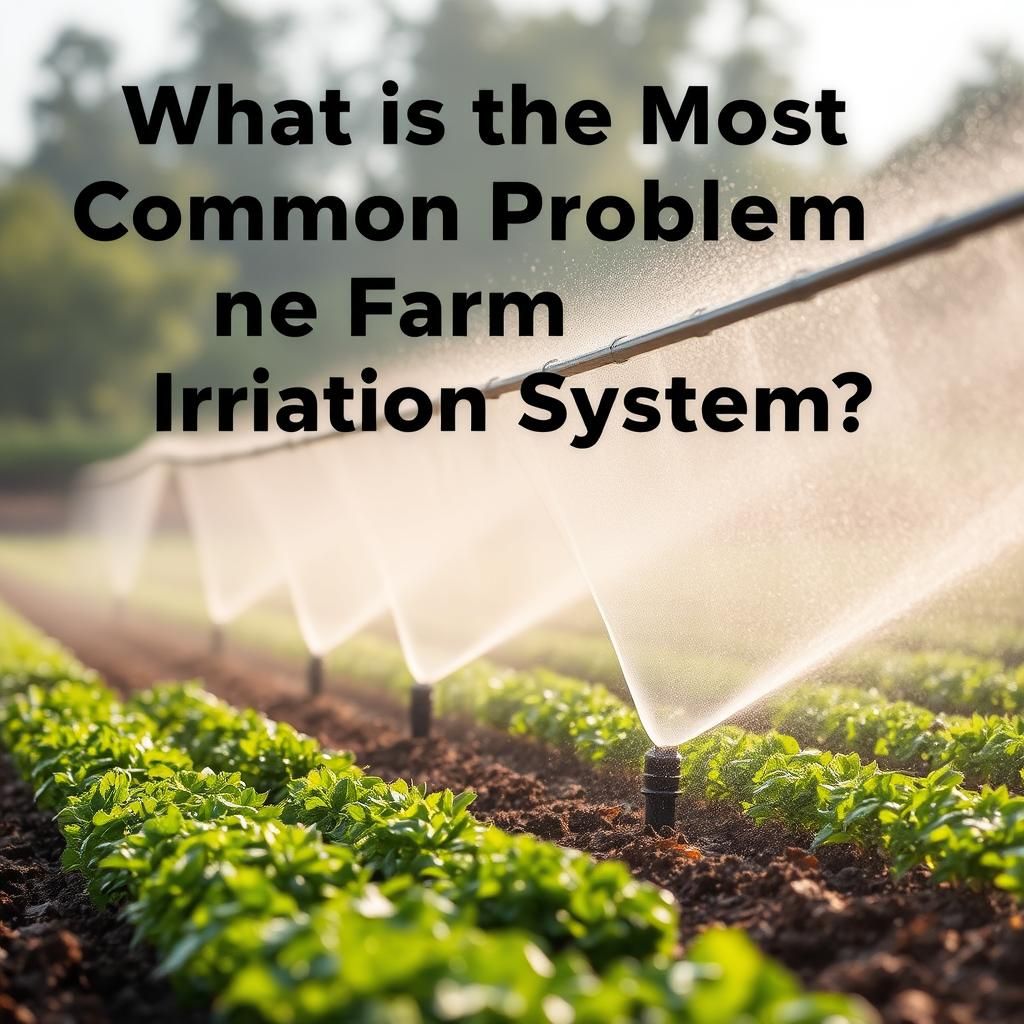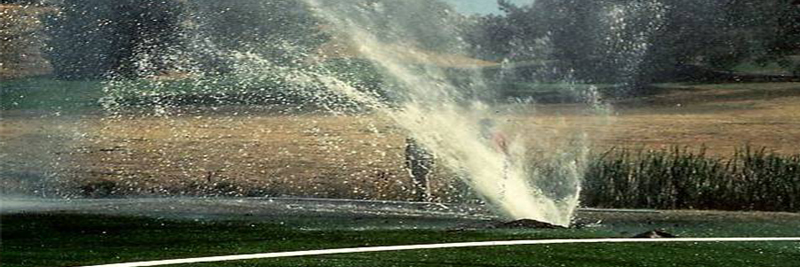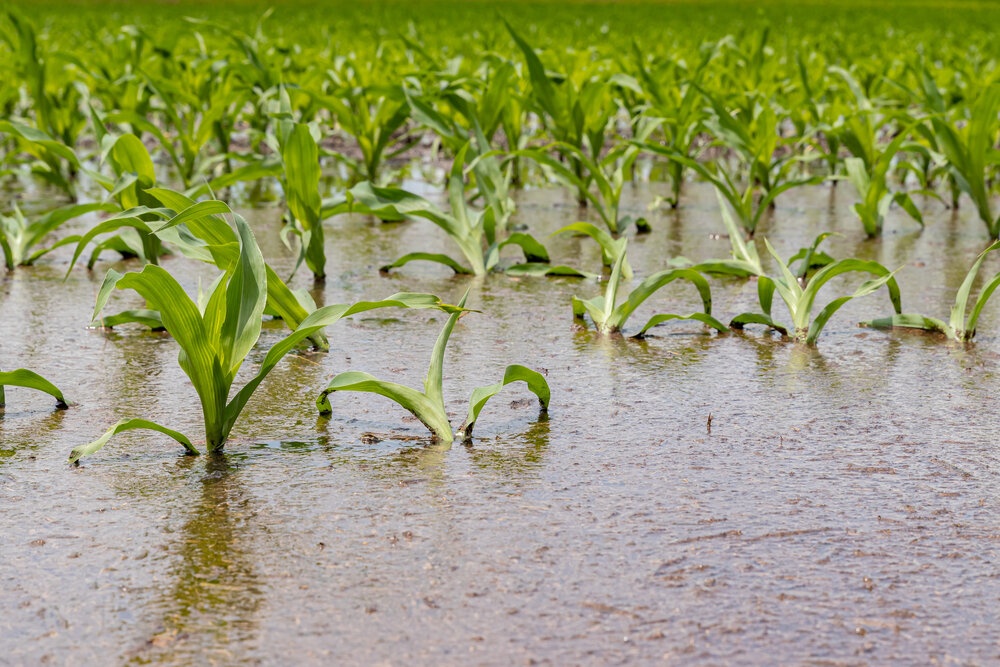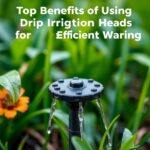What is the Most Common Problem with a Farm Irrigation System? Solutions and Tips Explained

Efficient irrigation is crucial for the success of any farming operation, yet many farmers encounter a variety of challenges with their irrigation systems. Understanding the most common problems can help mitigate costly disruptions and ensure optimal crop growth. This article delves into the key issues faced by agricultural practitioners, including clogged nozzles, inadequate water pressure, and improper scheduling. By exploring effective solutions and practical tips, farmers can enhance the performance of their irrigation systems, conserve water, and ultimately increase their yield. Join us as we unravel the complexities behind irrigation issues and provide insights for better management.
- What is the Most Common Problem with a Farm Irrigation System?
- Why do irrigation systems fail?
- What are the most common mistakes made in irrigation system installation?
- Which of the following is a common problem for efficient irrigation?
- What is the main concern with excessive irrigation in agriculture?
- Questions from Our Readers
What is the Most Common Problem with a Farm Irrigation System?
The most common problem with a farm irrigation system is inefficient water distribution, which often leads to uneven watering of crops. This issue can arise due to various factors such as clogged irrigation lines, malfunctioning valves, or improper system design. When some areas of the field receive less water, while others receive too much, it can lead to crop stress, reduced yields, and ultimately financial losses for the farmers. It is crucial for farmers to regularly inspect and maintain their irrigation systems to ensure optimal performance and efficient water use.
Clogged Irrigation Lines
Clogged irrigation lines are a frequent issue in farm irrigation systems, usually caused by sediment buildup, algae growth, or debris entering the pipes. When these lines become obstructed, they restrict water flow, leading to uneven distribution and poor crop health. Implementing regular maintenance routines, such as flushing the lines and using filters, can help mitigate this problem and ensure consistent water delivery to all sections of the field.
Malfunctioning Valves
Malfunctioning valves can significantly disrupt the efficiency of an irrigation system by preventing proper water flow. A valve that is stuck open may cause over-irrigation in certain areas, while a valve that is stuck closed can deny water to crops, causing stress and underdevelopment. Regular inspections and timely replacements of faulty valves are essential to maintaining the system's functionality and ensuring that every crop receives adequate moisture.
Improper System Design
An improper system design can lead to various issues in an irrigation setup, such as uneven pressure and water distribution. Factors like the layout of the field, the type of crops being grown, and the local topography must be considered when designing an irrigation system. Without an effective design tailored to the specific needs of the farm, the risk of water wastage and crop damage increases significantly, resulting in poor agricultural outcomes.
Lack of Regular Maintenance
A lack of regular maintenance is another significant problem that can compromise the efficiency of any irrigation system. Over time, wear and tear can lead to leaks, malfunctions, and reduced efficiency. Implementing a scheduled maintenance program, including inspections and repairs, is vital to extend the life of irrigation systems and buffer against failures that could affect crop production.
Poor Water Source Management
Poor water source management can adversely affect irrigation systems by limiting the availability or quality of water supplied to the fields. Issues such as drought, contamination, or over-extraction from groundwater can lead to inadequate water supply for crops. Farmers must establish effective water management practices, including diversifying water sources and monitoring water quality, to ensure a reliable supply for their irrigation systems.
| Problem | Description | Solution |
|---|---|---|
| Clogged Irrigation Lines | Obstructions limiting water flow. | Regular cleaning and maintenance. |
| Malfunctioning Valves | Preventing proper water distribution. | Routine inspections and replacements. |
| Improper System Design | Leading to uneven pressure and distribution. | Customized design based on field needs. |
| Lack of Regular Maintenance | Causing leaks and inefficiencies. | Scheduled maintenance programs. |
| Poor Water Source Management | Limiting water supply or quality issues. | Effective water management practices. |
Why do irrigation systems fail?

Irrigation systems play a crucial role in agricultural productivity, yet they often encounter failures that can diminish their effectiveness. Understanding the reasons behind these failures helps in designing better systems and applying proper management strategies. Here are some of the main factors that contribute to irrigation system failures.
Improper Design and Planning
A fundamental cause of irrigation system failure is defective design and inadequate planning. When systems are not tailored to the specific crop type, soil conditions, and water availability, it is likely they will underperform. Key aspects include:
- Site Assessment: Lack of thorough evaluation of the field leads to inadequate placement of irrigation lines.
- Inefficient Layout: A poorly designed layout may create dead zones where water does not reach.
- Capacity Miscalculations: Misjudging the water needs can result in either over-irrigation or under-irrigation.
Poor Maintenance Practices
Maintenance is critical for the longevity and efficiency of an irrigation system. Neglecting routine checks can lead to various problems. Some consequences of insufficient maintenance include:
- Blockages: Debris and sediment accumulation can obstruct pipes and emitters, leading to inconsistent water flow.
- Leakages: Cracks and holes in pipes can waste water, reduce pressure, and make the system less effective.
- Equipment Failure: Pump and motor inefficiencies can occur without regular service, limiting water distribution.
Inadequate Water Management
Efficient water management is essential for the successful operation of irrigation systems. Inadequate practices can lead to system failures, represented by the following points:
- Over-Irrigation: Excess water can lead to soil erosion and nutrient leaching.
- Under-Irrigation: Insufficient water application can stress plants and reduce yields.
- Timing Issues: Watering at inappropriate times (such as during heavy rains) can exacerbate problems.
Environmental Factors
Environmental conditions significantly impact the performance of irrigation systems. These factors can influence not only the efficiency but also the longevity of the systems. They include:
See also:
- Soil Type: Different soil textures hold water differently, affecting how irrigation systems operate.
- Climate Variations: Extreme weather conditions such as droughts or heavy rains can pose challenges to irrigation methods.
- Pest and Disease Incidence: Increased pest activity or diseases can result from over-watering or inadequate drainage systems.
Lack of Training and Knowledge
The success of an irrigation system heavily relies on the skills of the personnel operating it. A lack of proper training can lead to various operational issues, such as:
- Inexperience: Users may not understand how to adjust the system based on changes in crop needs or environmental conditions.
- Poor Decision-Making: Uneducated choices regarding equipment use and resource management can lead to system inefficiencies.
- Resistance to Change: Without ongoing education, users may fail to adopt new technologies that enhance water management.
What are the most common mistakes made in irrigation system installation?

The installation of irrigation systems is crucial for effective water management in both residential and agricultural settings. However, there are several common mistakes that can lead to inefficiencies and increased costs.
Improper System Design
A well-designed irrigation system is essential for maximizing efficiency and minimizing water waste. Common mistakes in this area include:
- Ignoring soil type: Different soil types absorb water at different rates, which can affect irrigation needs.
- Not considering plant needs: Different plants have varying water requirements and spacing, impacting irrigation frequency and amount.
- Lack of zoning: Failing to create zones for areas with different irrigation needs can lead to overwatering or underwatering.
Poor Material Selection
Choosing the right materials for the irrigation system is vital. Common errors include:
- Using low-quality components: Inexpensive materials may break down faster, leading to leaks and inefficiencies.
- Incorrect pipe sizes: Using pipes that are too small can restrict flow rates, while oversized pipes can waste water and increase costs.
- Neglecting fittings and connectors: Poor-quality fittings can cause leaks and reduce system efficiency.
Inadequate Water Pressure Management
Water pressure is key to the performance of an irrigation system. Mistakes often made here are:
- Not measuring water pressure: Failing to assess existing pressure can lead to improper system design.
- Ignoring pressure regulators: Neglecting to install pressure regulators can result in inconsistent water distribution.
- Overlooking flow rates: Misjudging flow rates can lead to over or under-resourcing certain areas.
Insufficient Maintenance Planning
A sustainable irrigation system requires ongoing maintenance. Common oversight includes:
- Skipping regular checks: Failing to regularly inspect for clogs or leaks can lead to bigger problems.
- Neglecting seasonal adjustments: Not adjusting systems according to seasonal water needs can waste resources.
- Ignoring technology upgrades: Not keeping up with advances can make systems less efficient over time.
Lack of Consideration for Local Regulations
Understanding local regulations is essential for a successful installation. Common mistakes are:
- Disregarding water usage restrictions: Not adhering to local laws can result in fines and penalties.
- Failing to obtain necessary permits: Some jurisdictions require permits that need to be obtained before installation.
- Ignoring environmental considerations: Neglecting to account for local ecosystems can lead to ecological harm.
Which of the following is a common problem for efficient irrigation?

Inefficient irrigation is often hindered by various common problems. One of the most prevalent issues is water scarcity. Climate change, population growth, and increased agricultural demands have stressed water resources. This not only affects the quantity of water available for irrigation but also leads to inconsistent supply. Moreover, inefficient practices can exacerbate these conditions, leading to over-extraction and further depletion of water sources.
Water Management Practices
Effective water management practices are crucial for optimizing irrigation efficiency. Poor water management can lead to waterlogging, salinization, and overall degradation of soil quality. Implementing better practices can enhance crop yield and preserve water resources:
- Utilizing soil moisture sensors to determine irrigation needs.
- Adopting rainwater harvesting techniques to augment irrigation sources.
- Regularly training farmers on sustainable practices to maximize water use.
Infrastructure Issues
The condition of irrigation infrastructure significantly impacts water efficiency. Old or poorly maintained systems can lead to leaks and inefficient distribution, causing water loss. Addressing these infrastructure issues is key to improving irrigation outcomes:
- Conducting regular maintenance checks on irrigation systems.
- Investing in modern technologies for water distribution.
- Replacing outdated materials with more durable alternatives.
Soil Quality
The quality of soil directly influences irrigation efficiency. Soil that is compacted or has poor structure can hinder water infiltration and retention. Improving soil quality should be a priority to ensure effective irrigation:
See also:
- Incorporating organic matter to enhance soil structure.
- Practicing crop rotation to prevent soil depletion.
- Testing soil regularly to monitor and address deficiencies.
Pest and Disease Management
Pests and diseases can not only harm crops but also disrupt irrigation effectiveness. If crops are unhealthy, they may require more water than normal, leading to inefficient usage:
- Implementing integrated pest management practices.
- Regularly monitoring crops for signs of disease or stress.
- Using disease-resistant crop varieties to minimize water consumption.
Climate Variability
Climate variability poses a significant challenge for efficient irrigation. Changes in rainfall patterns and temperature trends can lead to unpredictability in water availability, making it difficult to plan effective irrigation schedules:
- Adapting irrigation techniques to better suit changing climatic conditions.
- Employing climate prediction tools to inform irrigation practices.
- Developing drought-resistant crop varieties to cope with water shortages.
What is the main concern with excessive irrigation in agriculture?

Excessive irrigation in agriculture poses numerous serious concerns that can have detrimental effects on the environment, crop health, and the long-term sustainability of farming practices. One of the main issues is the depletion of water resources, which can lead to scarcity in regions that are already water-stressed. Additionally, over-irrigation can result in soil degradation, salinization, and disrupt local ecosystems, negatively impacting biodiversity.
Water Resource Depletion
Excessive irrigation demands significant amounts of freshwater, which can lead to a serious decline in water availability. When farmers overuse water for crops:
- Local rivers and groundwater sources may dry up, affecting both agriculture and human consumption.
- Wetlands can be drained, losing vital habitats for wildlife.
- Water tables may drop, resulting in increased costs for irrigation and threatening crop yields over time.
Salinization of Soil
When irrigation is excessive, especially in arid regions, the water can carry salts from the soil and deposit them on the surface. This process leads to:
- The accumulation of salt, which can hinder plant growth and reduce agricultural productivity.
- Changes in soil structure, making it less fertile and less able to retain moisture.
- Loss of crop diversity, as only salt-tolerant plants may thrive in heavily salinized soils.
Soil Degradation
Continuous over-irrigation can cause various forms of soil degradation, including erosion and nutrient leaching. The impacts include:
- A decline in soil health due to lost nutrients essential for plant growth.
- Increased erosion, which washes away the topsoil and further reduces agricultural productivity.
- Reduction in the soil’s biological activity, adversely affecting soil microorganisms that contribute to nutrient cycling.
Impact on Local Ecosystems
Over-irrigation can have substantial consequences for local ecosystems, primarily through the alteration of natural water cycles. This leads to:
- Changes in the habitat available for various species, as freshwater ecosystems may be disrupted.
- Increased runoff, which can introduce pollutants into local waterways, affecting water quality.
- Loss of biodiversity, as species that depend on specific water availability may decline or disappear.
Economic Impact
The economic implications of excessive irrigation can be significant and multifaceted. Key issues include:
- The rising costs of water extraction as supplies diminish and regulations become stricter.
- Reduced crop yields due to soil degradation and salinization, impacting farmers' profitability.
- Potential for increased government intervention, leading to fines or restrictions on water use for agricultural purposes.
Questions from Our Readers
What is the most common problem with a farm irrigation system?
The most common problem with a farm irrigation system is clogged lines or emitters. Over time, sediments, minerals, and organic materials can build up, leading to reduced water flow and inefficient irrigation, which negatively affects crop health and yield.
How can clogged emitters be prevented in irrigation systems?
To prevent clogged emitters, regular maintenance is essential. This includes filtering the water, performing routine inspections, and flushing the system to remove any accumulated sediment or debris that may cause blockages.
What impact does poor irrigation management have on crops?
Poor irrigation management can lead to overwatering or underwatering, both of which can stress plants. This might result in disease, reduced crop yields, and even loss of harvest if plants are either starved for water or drown due to excessive moisture.
Are there any modern technologies that help improve irrigation systems?
Yes, modern technologies such as drip irrigation, automated controllers, and soil moisture sensors greatly improve irrigation efficiency. These innovations allow for precise water application, reducing waste and ensuring crops receive just the right amount of moisture needed for optimal growth.
See also:

If you want to read more articles like What is the Most Common Problem with a Farm Irrigation System? Solutions and Tips Explained, we recommend you check out our Irrigation category.
Leave a Reply
Related Articles